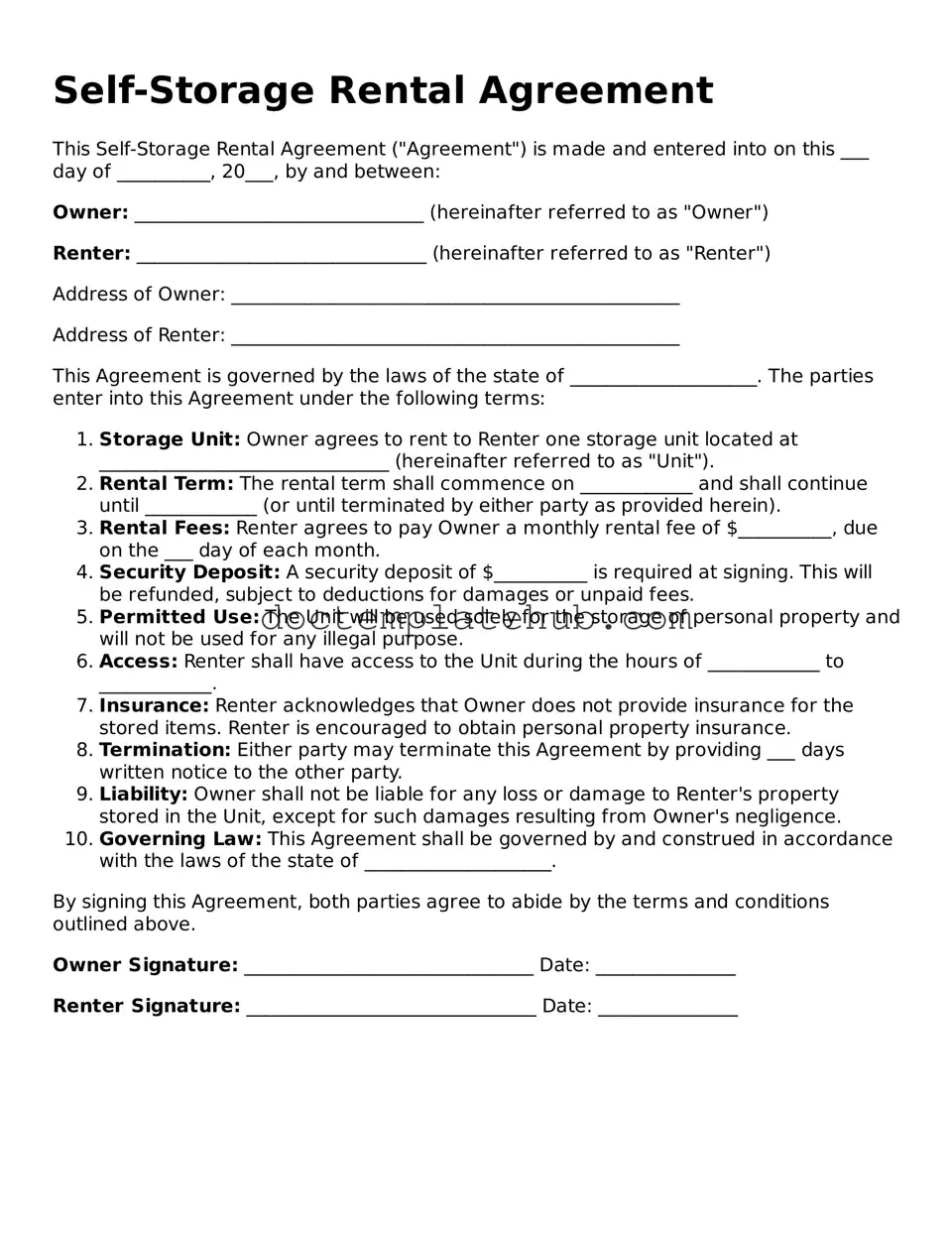What is a Self-Storage Rental Agreement?
A Self-Storage Rental Agreement is a legal document that outlines the terms and conditions between a storage facility and a customer renting a storage unit. This agreement specifies important details such as the rental period, payment terms, and responsibilities of both parties. It serves to protect the interests of both the storage facility and the renter.
What information is typically included in the agreement?
The agreement usually includes the names and contact information of both the renter and the storage facility, the address of the storage unit, the rental rate, payment due dates, and any late fees. Additionally, it may outline the security measures in place, the renter's access rights, and any restrictions on what can be stored.
How long is the rental period?
The rental period can vary based on the agreement. Some facilities offer month-to-month rentals, while others may have longer-term agreements. It’s essential to read the agreement carefully to understand the duration and any renewal options available.
What happens if I miss a payment?
If a payment is missed, the storage facility may impose late fees as outlined in the agreement. Continued non-payment could lead to the termination of the rental agreement and potential auction of the stored items. Always review the payment terms to understand the consequences of missed payments.
Can I access my storage unit at any time?
Access to your storage unit is generally defined in the agreement. Many facilities allow access during business hours, while some offer 24/7 access. Check the specifics in your agreement to know when you can access your belongings.
Are there restrictions on what I can store?
Yes, most storage facilities have restrictions on certain items. Commonly prohibited items include perishable goods, hazardous materials, and illegal substances. The agreement will typically outline these restrictions clearly, so be sure to review them before storing your items.
Is insurance required for my stored items?
Insurance requirements can vary by facility. Some may require you to have insurance, while others may offer it as an option. It’s advisable to check the agreement for any insurance stipulations and consider obtaining coverage for your items to protect against loss or damage.
What should I do if I want to terminate the agreement?
If you wish to terminate the agreement, you must follow the procedures outlined in the document. This often involves providing written notice to the storage facility within a specified timeframe. Be sure to confirm the process to avoid any additional charges.
What if I have more questions about the agreement?
If you have further questions, it is best to contact the storage facility directly. They can provide clarification on specific terms and conditions. Additionally, consider seeking advice from a legal professional if you have concerns about your rights and obligations under the agreement.
